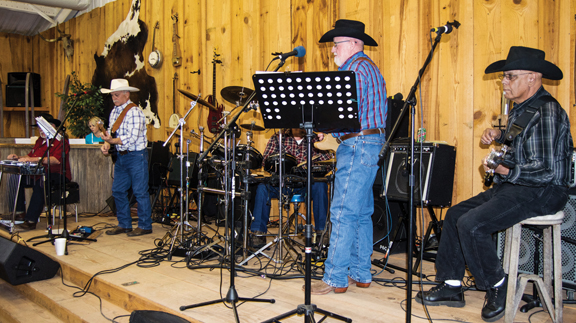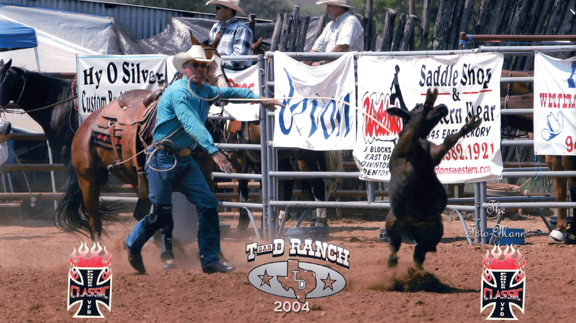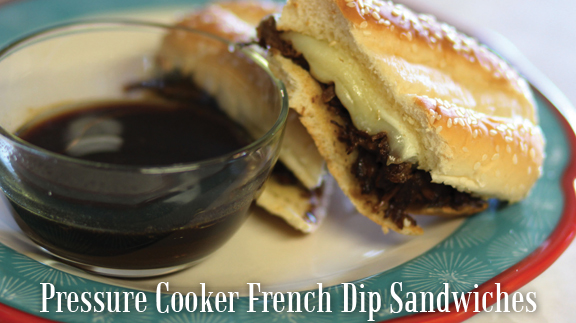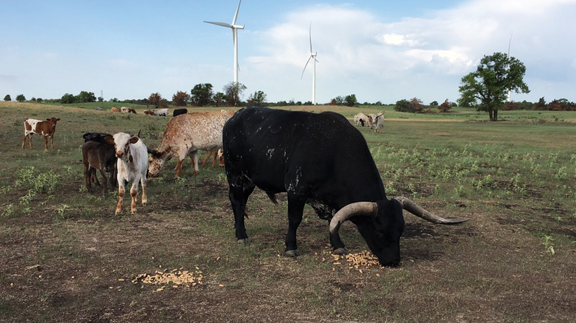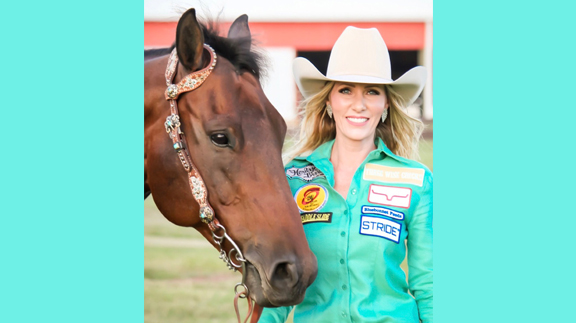Country Lifestyle
December 2017 Profile: John Jennings

By Laci Jones
Raised under the city lights of California, John Jennings is not your typical Californian. Born in El Centro, Calif., Jennings considered himself a “redneck,” spending many days hunting and fishing on the many California golf courses in Palm Springs, Calif.
“I would get kicked out of golf courses,” he said followed by a chuckle. “The security guards would run us off, and we would go to a different one.”
He was always “tinkering” with knives, guns and other items. Jennings recalled using circular saws as a child, saying it was “second nature.” At 17 years old, he dropped out of high school and began working full-time. Like his father, Jennings worked in construction.
“I was making $500 per week 30 years ago, which was pretty good money,” Jennings explained. “I moved out to my own apartment and just started doing my thing. Looking back, I wish I had gone to school because my son’s going to Oklahoma Baptist University, and he’s got so many opportunities.”
Jennings “bounced around” from job to job, never working at the same place for more than 18 months. His career took a backseat when he was diagnosed with Idiopathic thrombocytopenic purpura in his mid-20s. ITP is an auto-immune disease where the immune system sees blood platelets as foreign object.
“We were fixing to deer hunt out in the desert,” Jennings began. “I had these big ole bruises, and I didn’t think much of it.”
Jennings chalked the bruises up to clumsiness, but his wife suggested he visit the doctor to be sure. After his results came in, his doctor told him he needed to stay home, but Jennings was in denial.
“I felt 100 percent perfect. There’s nothing wrong with me,” he said. “I said, ‘No, I’m going deer hunting.’” They said, “Well, go ahead, but even a jar against a seatbelt could kill you.”
Jennings underwent many surgeries and chemotherapy treatments as well as took a daily concoction of pills to cure ITP. One chemotherapy treatment increased his appetite, causing his weight to rise to 250 pounds.
“I did this for like three years, and it finally just went away,” Jennings added. “By the grace of God, it went away.”
The southern California native said the experience changed his outlook on life. Ten years ago, Jennings and his family moved to Shawnee, Okla. He said the expense, traffic, regulations and the mounting doctor bills as well as his parents’ influenced his decision to relocate to the Sooner state.
“My parents wanted out of California 30 years ago, so they headed east on I-40 to look around,” he explained. “They originally were going to look in Arkansas, but they got stuck in a hail storm in Shawnee and stayed the night.”
Jennings said he lived in Shawnee, Okla., when he was eight years old, but moved back to California following the oil crash in the ‘80s. His parents later retired in Oklahoma.
“When I was kind of fed up with California too, my mom called and said, “There’s this really cute little house right across the street,” Jennings recalled. “It was a dump. My wife cried when she first saw it.”
Moving to Pottawatomie County allowed the California native to meet Bill Madole, a local bit and spur maker and neighbor of the Jennings family. Madole owned the land adjacent to Jennings, which overlooked the North Canadian River.
“[Madole] owns three corners of this river,” Jennings explained. “Once I found that out, I thought, “Man, I would like to hunt that.”
Jennings worked out a trade with the landowner for hunting privileges. The construction worker completed projects like fixing Madole’s roof or installing a new door. Jennings began watching Madole work and thought it would be “cool to try.”
Jennings was quickly discouraged once the talented blacksmith told him how much the equipment cost. After, he didn’t give spur making as a side-business another thought. Then things changed. Four years ago Madole was preparing to leave for the National Finals Rodeo where he had a booth.
“I said, ‘I’ll help you get ready for the NFR, and you show me how to make spurs,’” Jennings recalled. “He was sitting there, engraving while we were talking, and he said, ‘okay.’”
The apprentice was tasked with filing spur rowels, which he described as “monotonous” tasks. He continued to learn from the expert, copying his style of spur making.
“We do what is called ‘Texas-style spurs,’” Jennings explained. “The Texas-style is a bit more utilitarian than the Mexican or California-style spurs.”
The Mexican and California-style spurs are more ornate with more silverwork, and they have a larger rowel than the Texas-style, he added. The Texas-style is more subdued. Jennings said he did not experiment with other styles, contributing most of his influence from his teacher.
“I rely heavily on his style because, to me, that’s how it gets passed down,” he stated. “There’s a guy named Kevin Burns whose spurs are pretty expensive. He learned from a guy named Jerry Cates. If you look at a Burns spur, it looks a whole lot like Cates.”
Jennings said the same could be said of Billy Klapper, who learned from the “Godfather” of Texas-style spurs, Adolph Bayers.
“I remember I sold a couple pair to a guy in Stillwater, Okla., who was a trader,” he recalled. “He was carrying a pair of mine around a big spur show in Abilene, Texas. Another spur maker said, ‘Oh, you’ve got a pair of Madole spurs,’ and he said, ‘No, this is Jennings’ spurs, but he learned from Madole.’ This is how distinctive my buddy’s style is.”
He said the distinction of the spurs could be seen in the details. Many spur makers do not engrave in the steel, but Jennings and Madole make individual cuts in the steel to create a distinct design. Also, the area between the band and the shank is squared off, which requires more effort.
While he is inspired by Madole’s work, Jennings also has more resources available than his mentor had.
Pick up the December issue to read more about Jennings!
Country Lifestyle
Western Housewives – April 2024
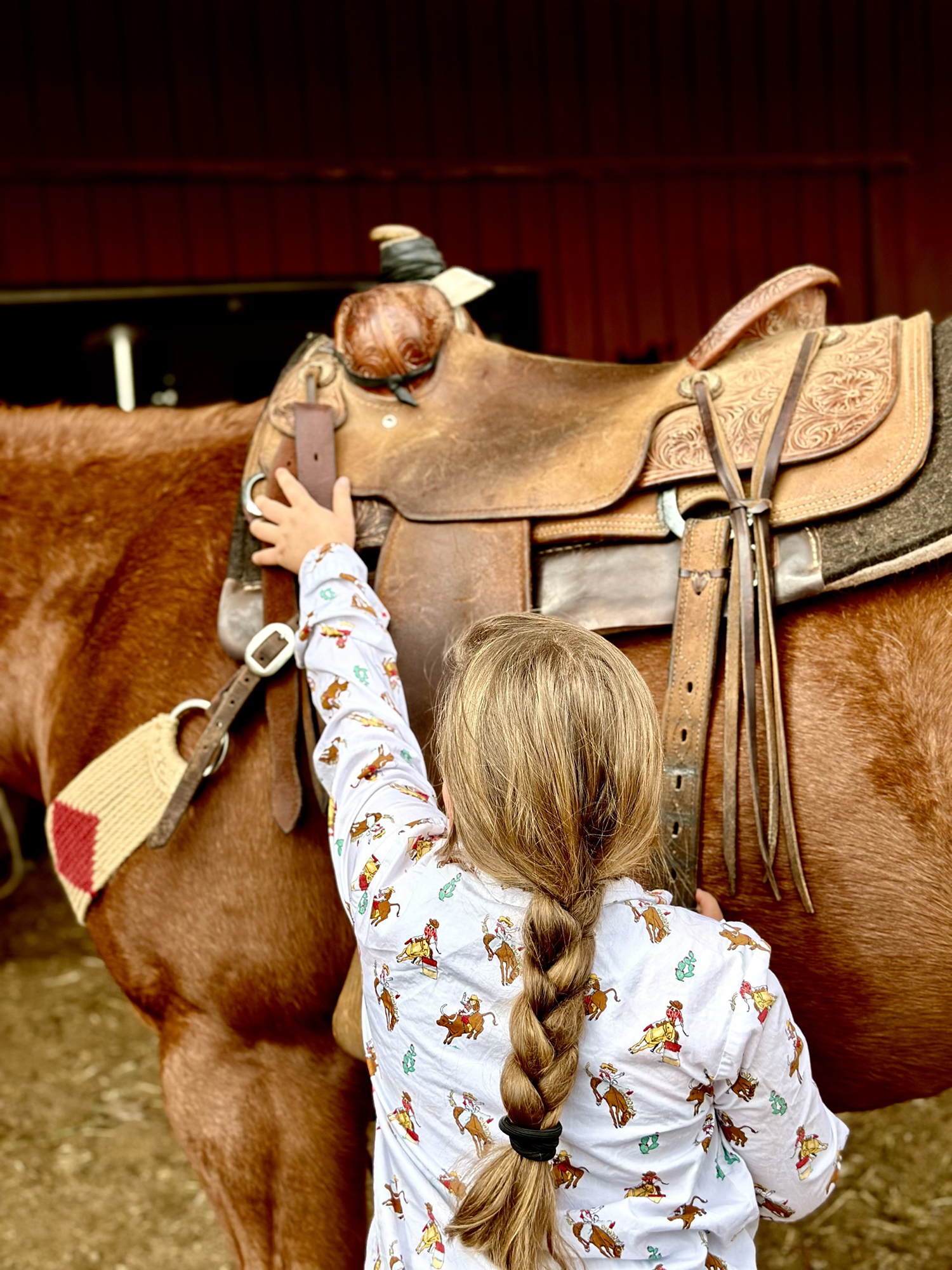
I am a mother. I do not know about the rest of you mothers, but the second I became “Mom,” my life became a constant state of wondering if I am doing a good job.
That is especially hard to tell when you choose to homeschool. I have no feedback from anyone that is not family. No teacher conferences telling me the little girl talks too much or the oldest boy can not sit still. Sure, I could ask my husband how he thinks our kids are maturing emotionally and intellectually. Still, he would most likely look out the window and see the aforementioned children running around in the sand with only socks on. He would then look at me and ask me to make him a quesadilla. I would say yes, we would joke about socks, and life would go on. See? Zero feedback to go on here.
So, you start to rely on personal experiences. You come up with little tests throughout your days to rate your kids “ready for society” level.
Example 1: A trip to the big city where the kids treat the grocery store as their personal snack depot. They successfully eat all the grapes and a whole block of cheese in your basket before you can check out. As you leave, they tell the door greeter, “Have a nice day.”
Example 2: Your husband enters an indoor rodeo. You are bouncing the baby and notice your oldest child is eating a bag of dippin dots. First, you smile and then remember that she has no money. Come to think of it, the concession stand is not even open. You have now concluded your firstborn has broken into the closed concession stand with her posse of four-year-old convicts and has helped herself to some ice cream.
Example 3: You are in church. The children have managed to be nice and quiet the entire time. After the message and the closing “Amen” is said, your three-year-old turns to you and says, “Well, that wasn’t so bad.”
After a little while, you start to question your “Ready for Society” tests. Are they productive? Are they accurate? I figure the answer to that question is better left unanswered.
One evening this summer, after I had quit conducting all these tests, I was mourning the loss of my children’s place in society when I looked up and noticed all our horses running down our driveway, headed for the neighboring pastures. For a minute, I just sat there wondering what I should do. I was holding the baby and wearing the ever-practical slip-on loafer and had absolutely no idea what was for supper. That had nothing to do with the horses being out, but that is part of being a housewife, I guess. You always wonder if you left the iron on and what is for supper.
While I sat there stunned, pondering life’s biggest questions, my husband and my daughter yelled at me to get a move on as they were already springing into action. My husband ran to stop them, and my daughter was on her way to the barn for some halters. Meanwhile, I was tripping over my loafers, scaring the horses and making already stressful matters much worse.
My husband finally got the horses cornered at the far end of our neighbor’s pasture and waved at me for some assistance. I handed the baby to my daughter and told her to watch the boys and stay in the house while I headed to help.
Within 30 minutes, we caught the horses and led them back to the corrals. I was in a near state of panic, wondering how long the boys had been crying and what state of mind my daughter was in, having just witnessed her dad nearly sweat to death and her mother make terrible fashion choices.
To my surprise, as I walked up to the house, I saw three happy children on the porch eating a supper of plums and peaches. The boys laughed at their sister as she shuffled little cars and cows around for them to play with. Not only had she fed and entertained her brothers, but she had also cleaned the house and fed the chickens to boot. I just stood there quietly watching for a while, not wanting to disturb the moment.
After the kids passed their first ever Ready for Society test, I realized that society’s standards versus my own were probably quite different. Society tells me that my kids need to be clean and quiet. Seen but not heard. Able to recite the ABCs on command but have no opinion on political matters. To be kind to everyone but never bring up God’s name and what He has to do with it. Society says my kids should fall into the assembly line and attend a good college someday to get a good minimum-wage job.
Why would I want my kids to fit into society when I do not even fit into society? No, I think I will keep my dirty little misfits all to myself. I think I will continue raising them to know how to care for themselves and each other. I will continue to show them how to serve God and work hard. I will continue to raise them never to wear slip-on shoes in the pasture and that plums and peaches are a totally acceptable supper on a warm summer evening.
Country Lifestyle
Poinsettia Partnerships Will Make Your Holidays Beautiful
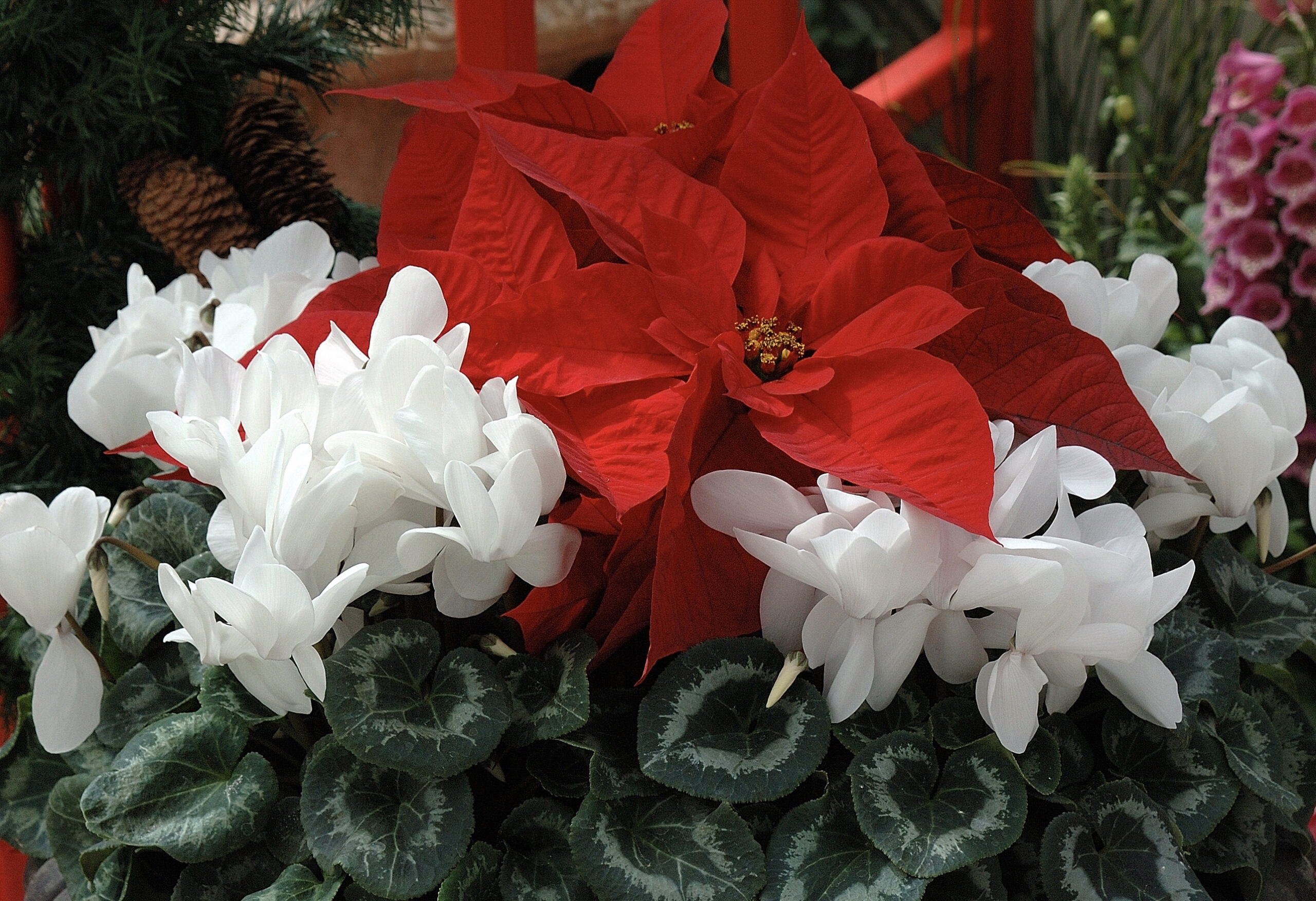
By
Norman Winter
Horticulturist, Author and Speaker
National Poinsettia Day just passed, December 12 to be exact. While I am sure the powers to be wanted a celebratory type day, from what I have been seeing this year is this may have been a deadline day. This most likely applies to poinsettia partners too! If you are asking what a poinsettia partner is then put on your thinking cap and gather around.
Proven Winners got most of us to thinking partners when they introduced the concept of combining poinsettias with Diamond Frost euphorbias. This is one of the best ideas ever and we now actually have three choices, Diamond Frost, Diamond Snow with double flowers and Diamond Mountain that is the taller of the three.
To a horticulturist like myself this combination is so special because both the Poinsettia and the Diamond Frost are Euphorbias. That’s right, they are cousins. Just like Christmas, families visiting and long-lost cousins getting together. Of course, the main reason we like this idea is that the red, pink, or variegated poinsettia looks incredible, it’s as though it is sitting on a bed of snow or frost. I have found these to be more available at fine florists.
But if you are going to create your own and go plant shopping then keep in mind some other options you might want to-try. For instance, a couple of years ago Jenny Simpson of Creekside Nursery in Dallas North Carolina introduced us to not only using caladiums at Christmas but even in combinations with poinsettias. She used the Heart to Heart White Snowdrift caladiums which turned out to be a perfect partner with red poinsettias.
My time as Executive Director at the Coastal Georgia Botanical Gardens in Savannah GA taught me there are opportunities for outside use with poinsettias, particularly if you are astute at long range weather forecasting. First consider that Savannah is technically zone 8B with a proclivity to lean into zone 9. We used poinsettias in large planters surrounded by Silver Bullet Dusty Miller or artemisia.
A similar application gave me the opportunity of photographing pink poinsettias mass planted in an atrium-like setting and surrounded by gray leaved Icicles helichrysum. But the most obvious and perhaps easiest if you are getting a late start is to combine your poinsettias with another Christmas plant like cyclamen. White cyclamen around a red poinsettia can be simply breathtaking.
This year I have also been watching what I call the professional garden club ladies walking out of both florists and floral departments with holly berries. We all think of hollies on swags above the fireplace or front door, but two or three preserved branches loaded with red berries stuck in a pot of white poinsettias is quick, easy and unbeatable.
Red berries for Christmas, landscape beauty, and of course feeding the birds is a prime reason to grow winterberry hollies like the compact Berry Poppins. Consider also growing Berry Heavy Gold winterberry holly. Cutting branches of the gold berries to be used with red poinsettias makes a stunning partnership. Go to Proven Winners site, Winterberry Holly: The Ultimate Guide to Getting Colorful Berries. If you don’t have poinsettias yet make today your shopping day! Follow me on Facebook @NormanWinterTheGardenGuy for more photos and garden inspiration.
Country Lifestyle
Homesteading Skills: The Essentials for Self-Sufficiency and Sustainable Living
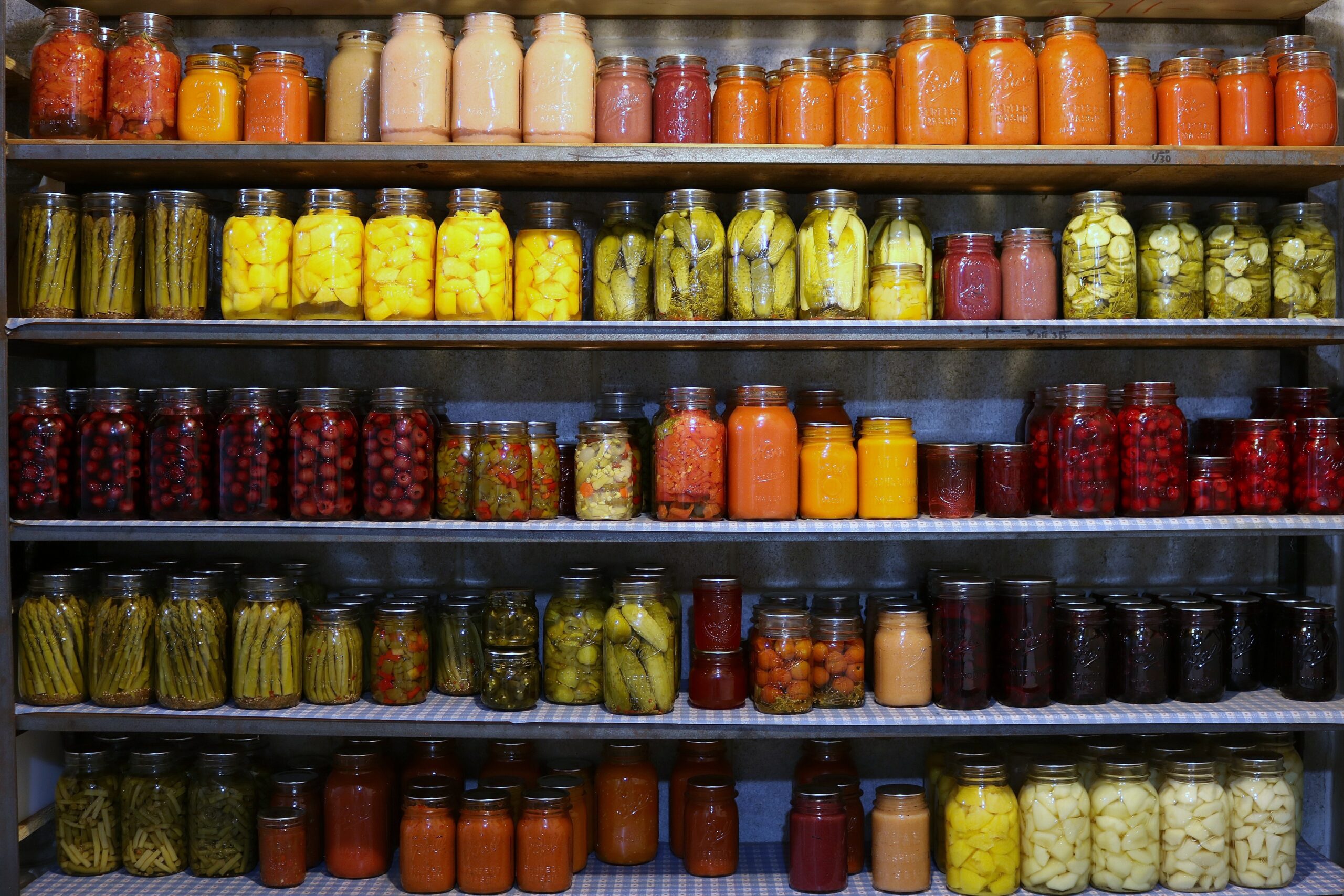
Homesteading, once a way of life for our ancestors, is experiencing a resurgence in today’s world. As people seek greater self-sufficiency, a deeper connection with the land, and more sustainable lifestyles, homesteading skills have become not only practical but also deeply rewarding. In this article, we’ll explore the essential homesteading skills that can empower individuals and families to live more self-reliant and sustainable lives.
1. Gardening
At the heart of homesteading is the ability to grow your own food. Gardening is the foundation of self-sufficiency, and it’s a skill that can be cultivated no matter the size of your property. Key gardening skills include:
Soil preparation and composting
Seed starting and transplanting
Crop rotation and companion planting
Pest and weed management
Harvesting and food preservation techniques like canning, freezing, and drying
2. Animal Husbandry
Raising animals for food, fiber, and companionship is a fundamental aspect of homesteading. The skills related to animal husbandry include:
Care and feeding of livestock, such as chickens, goats, cows, or pigs
Breeding and reproduction management
Livestock housing and pasture management
Animal health and basic veterinary care
Dairy and meat processing if you’re raising animals for consumption
3. Food Preservation
To make the most of your garden’s bounty or the harvest from your livestock, knowing how to preserve food is essential. Food preservation skills include:
Canning fruits and vegetables
Fermentation for foods like sauerkraut and kimchi
Dehydrating fruits, vegetables, and herbs
Making homemade jams, jellies, and pickles
Smoking, curing, and other methods for meat preservation
4. Foraging and Wildcrafting
Homesteading often involves making the most of what nature provides. Learning to identify and use wild edibles and medicinals is a valuable skill:
Identifying edible wild plants and mushrooms
Harvesting herbs for teas, tinctures, and salves
Sustainable foraging practices to protect local ecosystems
Preserving wildcrafted items for later use
5. Beekeeping
Keeping bees not only provides a source of honey but also contributes to pollination on your property. Beekeeping skills include:
Setting up and maintaining beehives
Handling and managing bees safely
Harvesting and processing honey and beeswax
Identifying and addressing common bee health issues
6. Food Self-Sufficiency
Beyond gardening, you can work toward greater food self-sufficiency by learning skills like:
Seed saving to preserve heirloom and open-pollinated varieties
Raising and harvesting small livestock like rabbits or quail
Cultivating perennial food crops like fruit trees and berry bushes
Aquaponics or hydroponics for year-round food production
7. Basic Carpentry and DIY Skills
Homesteaders often find themselves needing to build and repair structures, tools, and equipment. Carpentry and DIY skills include:
Building raised beds, chicken coops, and animal shelters
Basic woodworking for constructing furniture and farm implements
Repairing and maintaining machinery like tractors and generators
Fencing and infrastructure construction for property management
8. Water Management
Managing water resources efficiently is crucial for sustainable living. Key skills include:
Rainwater harvesting and storage
Drip irrigation and water-saving techniques for gardening
Proper well maintenance and water testing
Building and maintaining ponds or water features for livestock and wildlife
9. Energy Independence
To live off the grid or reduce your environmental footprint, consider energy independence skills:
Solar panel installation and maintenance
Wind turbine installation and maintenance
Energy-efficient building design and retrofits
Off-grid living strategies for reduced reliance on public utilities
10. Soap and Candle Making
Homemade soaps and candles can reduce reliance on store-bought products. These skills include:
Making soap using cold or hot process methods
Crafting candles from beeswax, soy, or other materials
Adding scents and colors naturally
11. Herbal Medicine and Remedies
Homesteaders often turn to herbal medicine and remedies for self-sufficiency in healthcare:
Growing and harvesting medicinal herbs
Making tinctures, salves, and herbal teas
Natural remedies for common ailments
Basic first-aid and emergency care skills
12. Sewing and Textile Arts
Basic sewing skills are essential for making and repairing clothing, linens, and more. These skills include:
Hand and machine sewing techniques
Mending and darning clothing
Knitting, crocheting, and other textile arts
Crafting items like blankets, rugs, and quilts
Homesteading is not just a return to simpler times but a way to embrace self-sufficiency, sustainability, and a deeper connection with the land. While mastering all these skills may take time, the journey itself is a rich and rewarding experience. Homesteading is about learning, adapting, and continually improving your ability to live more independently and in harmony with the environment. Whether you have acres of land or a small urban plot, these essential homesteading skills can empower you to live a more self-reliant and sustainable life, fostering a sense of fulfillment and purpose in the process.
-

 Country Lifestyle7 years ago
Country Lifestyle7 years agoJuly 2017 Profile: J.W. Hart
-

 Outdoors6 years ago
Outdoors6 years agoGrazing Oklahoma: Honey Locust
-

 Country Lifestyle2 years ago
Country Lifestyle2 years agoThe Two Sides of Colten Jesse
-

 Attractions7 years ago
Attractions7 years ago48 Hours in Atoka Remembered
-

 Farm & Ranch5 years ago
Farm & Ranch5 years agoHackberry (Celtis spp.)
-

 Outdoors4 years ago
Outdoors4 years agoPecan Production Information: Online Resources for Growers
-

 Equine7 years ago
Equine7 years agoUmbilical Hernia
-

 Country Lifestyle1 year ago
Country Lifestyle1 year agoSay Yes!

